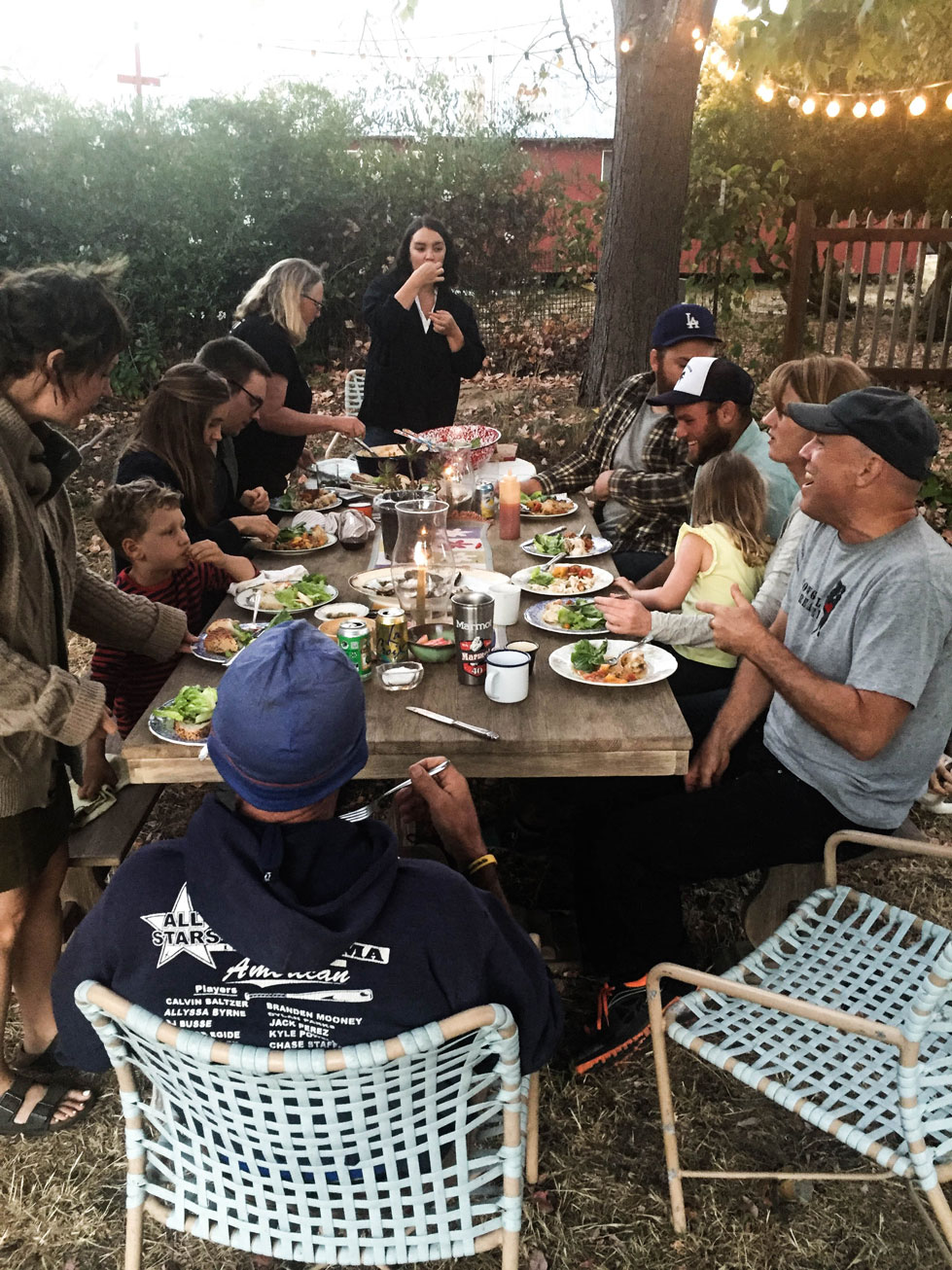Strangers at the Table

Connecting Cultures & Building Community
by Lisa Ludwigsen
What if there was a recipe for raising children? Two parts this, one part that, a pinch and a dash, some careful kneading and voilá, a happy, successful adult is rendered. Though it might take considerably less effort, that’s not how it works. In fact, there are many paths to take on the journey toward adulthood.
As my two children were growing up here in Northern California, we didn’t have the resources to travel the world as the great adventurers I had envisioned. We lived in a funky little farmhouse, surrounded by natural beauty and within striking distance of a world-class city. But day-to-day, the recipe of our lives revolved around work and school and sports practices. We did our respective chores and fought over screen time, folding laundry, and dirty bedrooms—all the normal stuff. The question remained for me as the parent: how can our little family look beyond the everyday to elevate, just a little, the daily conversation to include the cultures, people, and places not represented in our largely homogenous environment?
That’s when I started inviting people over for dinner. Squeezed around the large table in our small kitchen, I discovered that exposing young people to distant cultures and places can actually be accomplished through the simple act of sharing good food with welcoming hearts.
My strategy was simple: whenever I encountered someone interesting, especially if they were from a far-off place, I invited them to dinner. And surprisingly, most of them accepted. These dinners did not require slow, all day cooking. They included very basic kid- and visitor-friendly food—pastas, roasted or fricasseed chickens, big simple salads, seasonal veggies, and good bread. The more basic, the better.
The kids were always an integral part of the process. They set and cleared the table, lit the candles, and took turns raising their glass of water or milk and toasting to the food and the visitors. Then the talking began.
When sharing a meal with adults, especially guests from another place, young people, even those as young as six or eight, learn about both their culture and other cultures. They navigate the intricacies of conversation, figure out how to listen, form new thoughts, and contribute in ways that put them on equal footing with everyone around the table. Occasionally, conversations became uncomfortable, and my job was to hold the safe space for all involved. Never did it go completely off the rails.
We worked to make our guests feel welcomed, understood, and connected. In turn, we were able, as a family, to ask questions, hear stories, and expand our world. The vintage globe on a shelf in the kitchen provided perspective about the distance of the places we were exploring.
Over the years, our guests included, among others, an organic farm manager from Florida, a young dancer from Ethiopia, a leadership consultant from Australia, a young woman from Hungary, a worldly martial arts master and his pre-teen son, and a wide variety of interesting neighbors and friends.
Back to the food: The way we cook and share food can be generous and filled with love, without pretense or complication. First and foremost, drop all expectations that the house, yard, food, and drink need to be in any way remarkable. A house with little kids is messy. Period. Remember that all a visitor really wants is to feel welcomed and that their hosts find them interesting. I relied on a small collection of recipes, usually from my Marcella Hazan Italian cookbooks or the Joy of Cooking, that I could pull together in about an hour. I roasted so many chickens that I got really, really good at it.
As my children matured, their girlfriends joined us, extending the family. My part of guiding the conversation shifted as I watched the young people step up.
In hindsight, this was one of the smartest and most enduring aspects of raising these two good young people. They’ve grown up to create their own community of friends who cook and eat together and travel the world. And I consider those fun times around the kitchen table an important ingredient in the recipe for building a strong, inclusive global community, one platter of food at a time.
DOs & DON’Ts
DO
Make easy food that can be prepared in an hour.
Include young children. Don’t underestimate their level of attention.
Involve the kids—setting and clearing the table, lighting candles, giving toasts/thanks before the meal.
Include friends, if you think it will work, when you invite a new acquaintance.
Ask about dietary restrictions.
Wine/beer/cocktails in moderation help ease the mood.
DON’T
Do not attempt perfection. You will not achieve it, and it will ruin your enjoyment.
Don’t make a meal with more than four dishes—main, veggie side, salad, and bread really is all you need.
A simple dessert, like fruit and cookies, helps the evening last a little longer.
Don’t let guests do the dishes. I think it complicates.
Resources: Essentials of Classic Italian Cooking by Marcella Hazan—Marcella Hazan can turn 5 ingredients into a masterpiece—and so can you! The Joy of Cooking—anything & everything you ever need to know about just about any food.
Lisa Ludwigsen is marketing manager at Ukiah Natural Foods Co-op. For the last 25 years, she has worked with families, farms, and food through school garden programs, small scale farming, and the media.
